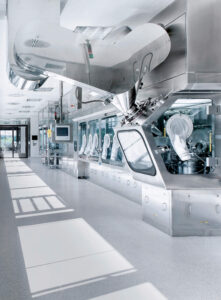In The News
Achieve ROI & Savings with Process Closure
Biopharmaceutical Manufacturing with Closed Systems: A Deep Dive
Understanding Closed Systems in Biomanufacturing
In the realm of biopharmaceutical manufacturing, closed systems are paramount. These systems are engineered to shield pharmaceutical products from contamination during the intricate manufacturing process. By establishing robust barriers and controls, closed systems minimize the risk of external contaminants compromising product quality and patient safety.
Key Considerations for Implementing Closed Systems
-
Product Protection: Above all, the primary objective of closed systems is to safeguard pharmaceutical products. By mitigating contamination risks, manufacturers can ensure the safety, efficacy, and quality of their products, ultimately benefiting patients.
-
System Design: Next, understand that closed systems consist of primary and secondary barriers. The primary barrier directly protects the product, while the secondary barrier reinforces the primary barrier and mitigates contamination risks from the external environment.
-
Unit Operations: Remember that each unit operation in biomanufacturing should be treated as an independent closed system, further divided into sub-closed systems. By doing so, the approach ensures comprehensive risk mitigation and maintains product integrity throughout the manufacturing process.
-
Strategic Implementation: Prioritize open aseptic operations for closure, such as cell bank preparation, inoculum preparation, weigh-and-dispense operations, and sampling. Additionally, connections that pose contamination risks should be considered for closure.
Impact on Facility Design and Operation
The adoption of closed systems significantly influences the design and operation of biomanufacturing facilities. By implementing closed systems, manufacturers can:
-
Reduce classified space requirements
-
Optimize HVAC (Heating, Ventilation, and Air Conditioning) system sizing
-
Lower operational costs
-
Enhance sterility assurance
-
Improve regulatory compliance
A Case Study in Successful Implementation
A biotech manufacturer transitioned from a traditional Grade A BSC (Biosafety Cabinet) in a Grade B background to a closed isolator system in a Grade C/D suite. This strategic shift resulted in substantial cost savings, improved sterility assurance, and streamlined regulatory compliance. Read more here: Open vs. Closed Aseptic Processing Systems Analysis
Embracing the Future of Biopharmaceutical Manufacturing
Closed systems represent a pivotal advancement in biopharmaceutical manufacturing. By understanding and implementing closed systems, facilities can achieve higher levels of product protection, ensure regulatory compliance, and optimize operational efficiency. Embracing closed systems is not just a trend; it’s a strategic investment in the future of biopharmaceutical manufacturing
